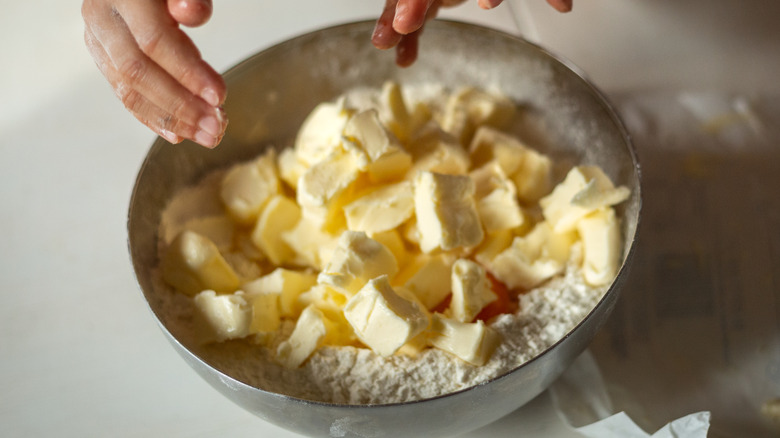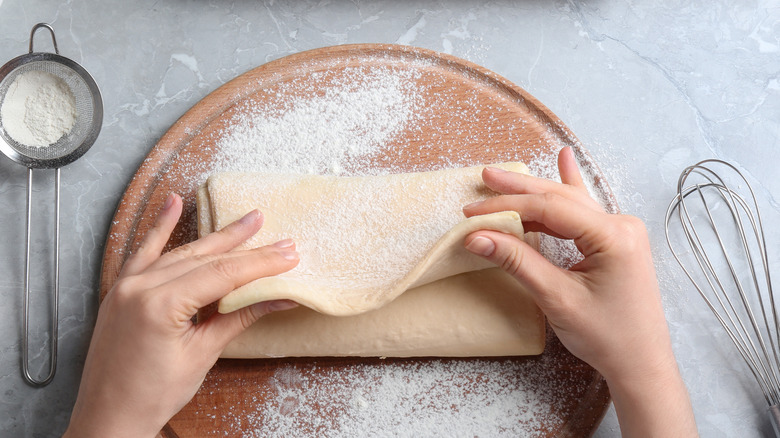The Easy Butter Hack That Leads To The Flakiest Pastries
Melted, room temperature, cold, cubed, or whipped ... in baking, butter comes in all shapes and forms. For ultra-flaky pastries, however, you'll definitely want your butter cold – and smushed between your fingertips.
To integrate cold butter into all of your favorite pastry doughs, it's ideal to work the butter into the mixture with your hands. This achieves two effects: It makes the cold butter easier to work with and allows you greater control over your butter's consistency. On its own, cold butter can prove challenging to incorporate, as it doesn't mix as easily with dry ingredients as its melted counterpart. However, when you're making a pastry that requires layers, you don't want anything other than that cold, solid fat. Cold butter helps those delicious flaky layers form, giving your pastry shape — rather than just flavor. If you've ever made croissants, you understand just how important those cold butter pieces are, particularly when it's time to roll out your dough and form layers.
So, to help mix that cold butter into your dough and better regulate the shape and size of your butter chunks, simply chop your butter into cubes. Then, use your hands to smush, then add, each chunk to your flour mixture. From there, follow your recipe as you normally would. This trick works well across pastry recipes, though it especially pertains to laminated pastries that need butter's help for those trademark layers.
Use this butter smushing trick for everything from pie crusts to puff pastries
Rather than creaming butter the way you would for fluffy cakes, you'll want to keep those buttery chunks for flaky pastries. Think puff pastry, pie crust, pain au chocolate, scones ... you get the idea. Basically, for anything that calls for a flaky, laminated texture, the butter should be cold and worked into the flour with your fingers. If you use warm butter, it's more likely to melt in your pastry before it's had time to form layers. This will create greasy pastry.
Granted, you can also add cold butter chunks via automatic tools like pastry blenders. However, flattening the butter with your fingertips ultimately allows you a greater say over the size of your butter's chunks. It likewise helps you avoid over-mixing your dough. With flat layers, you can roll your pastry out with intention, so by the time your croissants exit the oven they're worthy of any French bakery.
While over on Instagram, baker Ed Kimber adds rum to his very flaky pastry dough, you can simply use cold water to bring yours together. And there's no need to worry about those concentrated butter chunks surfacing as, well, concentrated chunks. Once in the oven, those chunks will, of course, melt, adding tenderness in addition to defining those delicious layers. How's that for a double win?

